24 Hours in Magnificent Chiang Mai
December 24, 2016

Thailand’s “Rose of the North” boasts cultural and natural wonders with many attractions and a diverse ethnic food selection to explore. Chiang Mai literally means “new city” and was founded by King Meng Rai the Great in 1296. At that point of time, Chiang Mai was known as the capital of the Lanna Kingdom and was also the centre of Buddhism in Northern Thailand. You need more than a weekend in Chiang Mai to experience how both historical and modern Thai culture coexist side by side. There are so many things to see, do and eat in Chiang Mai but we only had a day so this itinerary is what we propose. Check out Amazing Thailand (Tourism Authority of Thailand) for more information on Chiang Mai.
READ: 10 THINGS TO DO IN CHIANG MAI
If you’re heading to Chiang Mai from Bangkok, there are options for budget travelers – ordinary, 2nd class and 1st class air-conditioned buses. These buses leave throughout the day from Bangkok’s Northern Bus Terminal (Mo Chit 2) for Chiang Mai. Private buses can also be conveniently booked at tourist centres in Bangkok. The journey takes around 10 to 12 hours, depending on traffic conditions. You can also take the express and rapid trains that leave for Chiang Mai from Bangkok’s Hua Lumphong Station, which takes about 11 to 12 hours (express train).
No budget constraints and looking for the fastest way? Domestic airlines such as Thai Airways operate several flights daily between Bangkok and Chiang Mai. We were really fortunate to have been passengers aboard the new Airbus A350 for our flight to Chiang Mai, which took slightly more than an hour.
10:00am – Chiang Mai Celadon
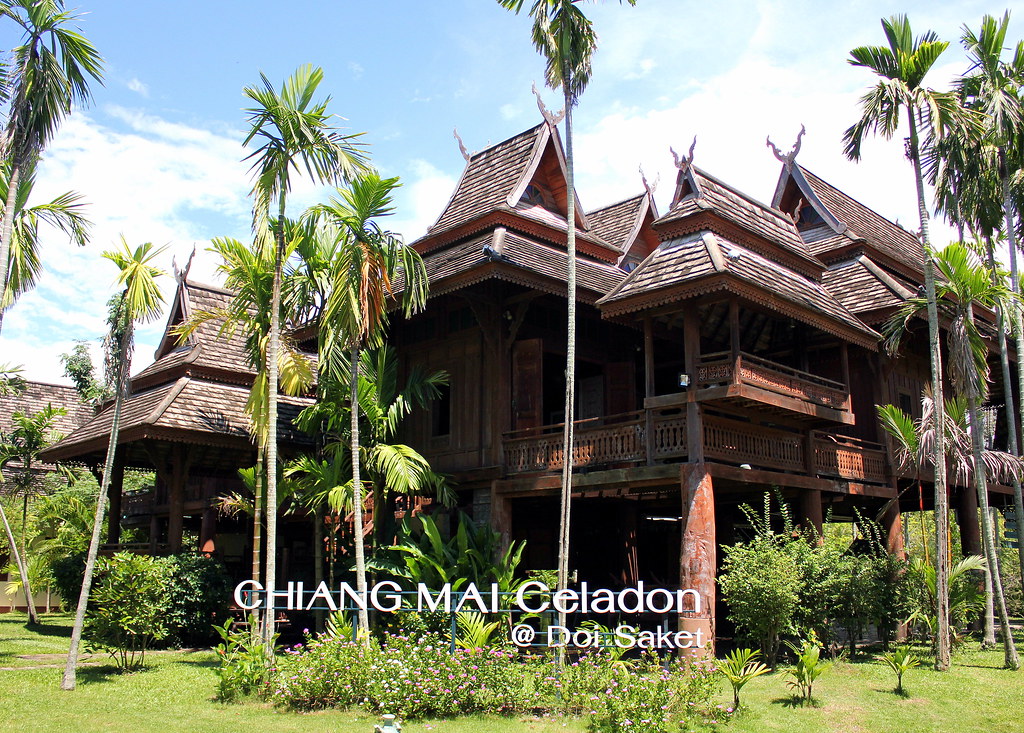
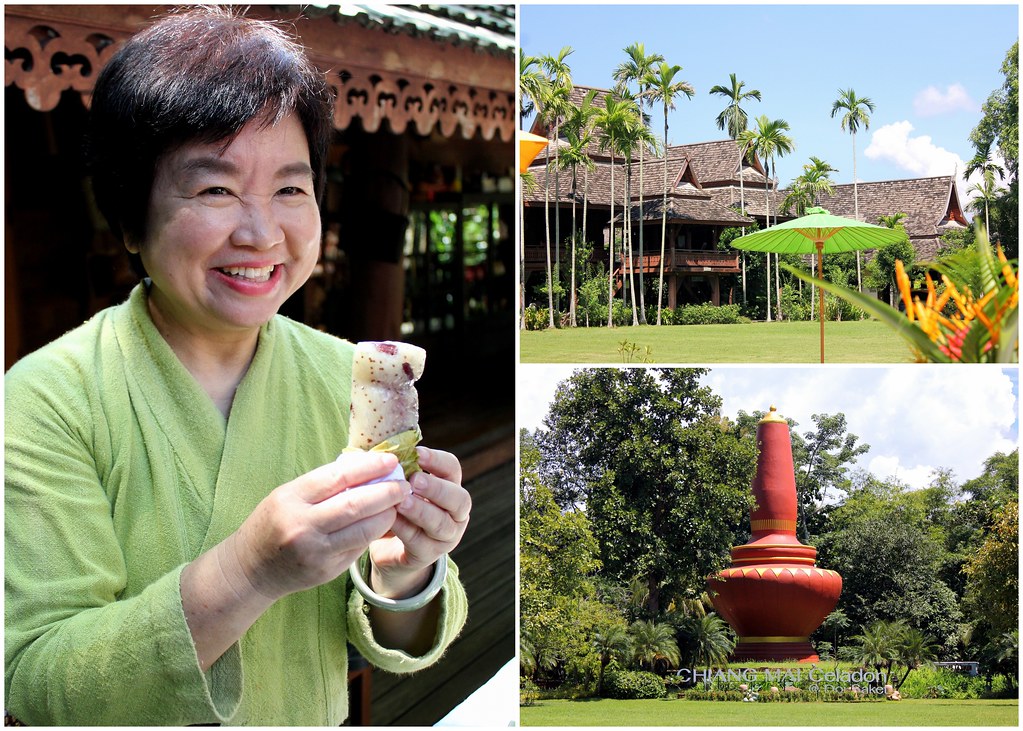
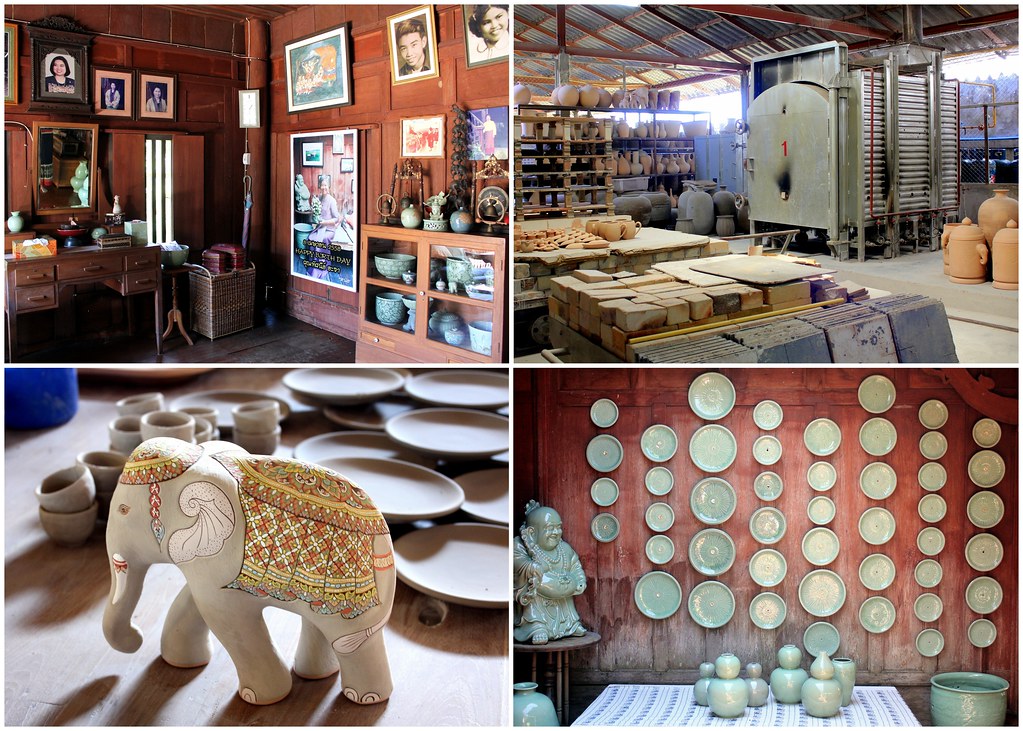
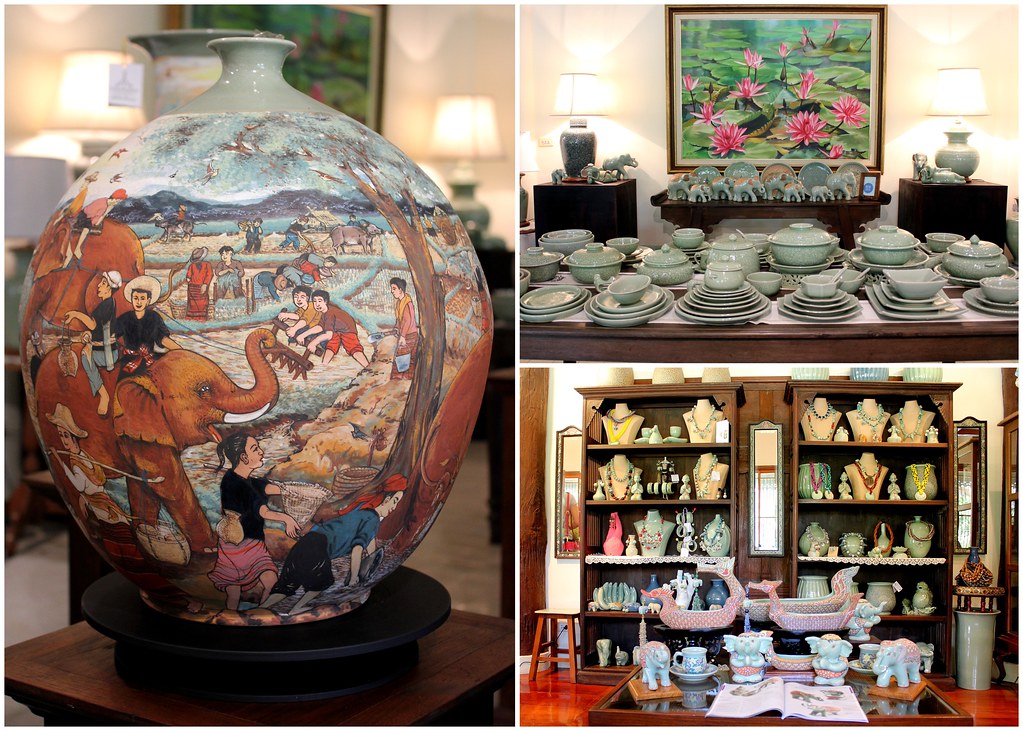
With a fiery hot passion for the art of Celadon-glazed ceramics, Khun Tassanee devoted almost 25 years of her time and energy to working on celadon ceramic pottery since 1989. Chiang Mai Celadon has become a brand and symbol of Chiang Mai Celadon-glazed ceramics, producing and distributing Celadon, Celadon ceramic, dinnerware, home décor, gifts and souvenirs. This “stoneware” goes through the classic manufacturing process where the glaze is produced from combining the ashes of laurel wood with the surface soil of rice paddies, well noted for its high iron content. Many layers of glaze must be applied on the product in order for the ash-glazing process to produce a unique, beautiful, green colour glossy coat that is distinctive of the timeless Celadon style of ceramics.
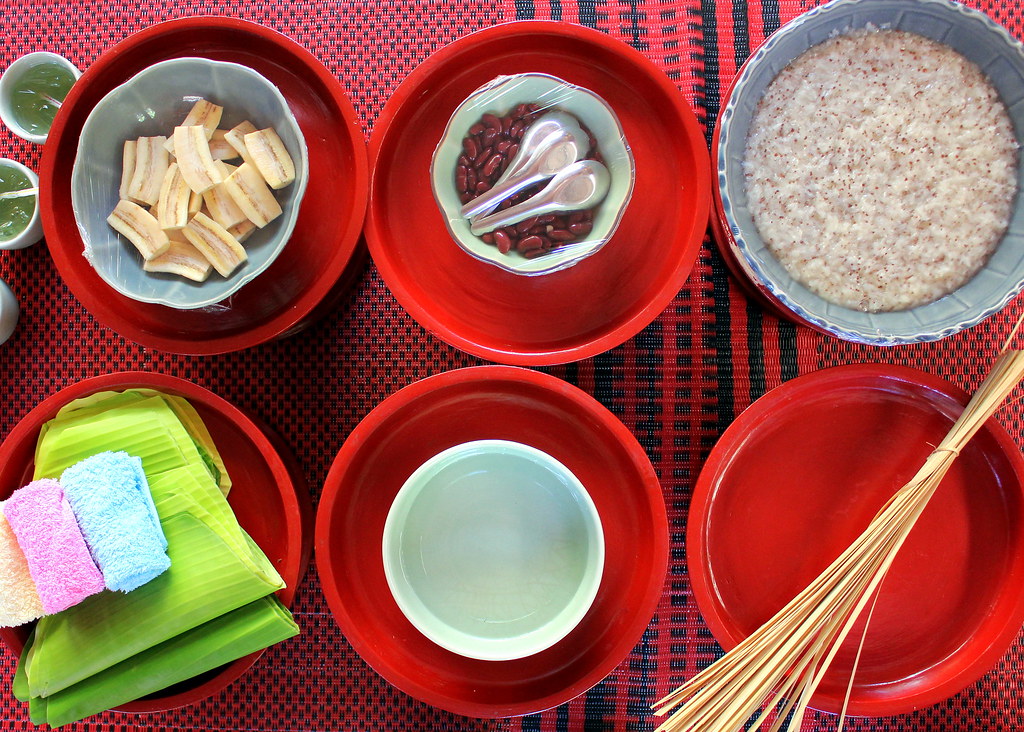
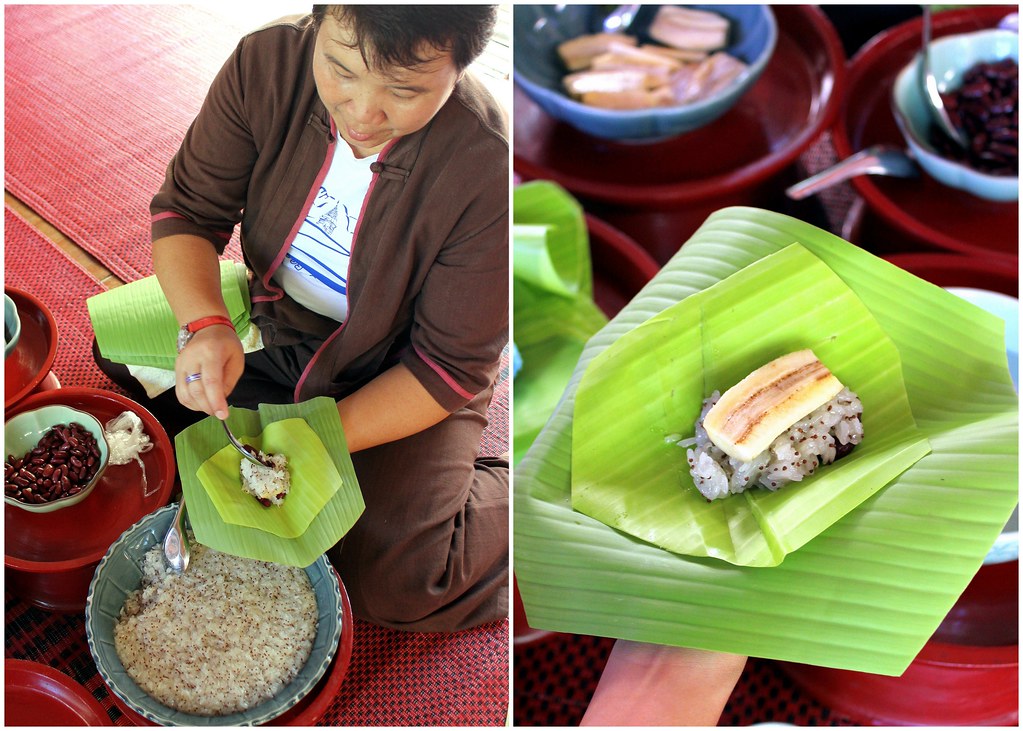
Besides learning about Celadon-glazed ceramics, we were also taught how to prepare a traditional Thai dessert called “Khao Tom Mud”. “Khao” is literally translated to “Rice” while “Tom” refers to the method of cooking, either steamed or boiled and “Mud” means wrap. Therefore, to put it simply, this is kind of like Sticky Rice with Banana Wrap. The sticky rice used at Chiang Mai Celadon is special as it is first mixed with black sesame. After wrapping our own “Khao Tom Mud”, each dessert was sent to the steamer before we finally enjoyed them during our lunch time.
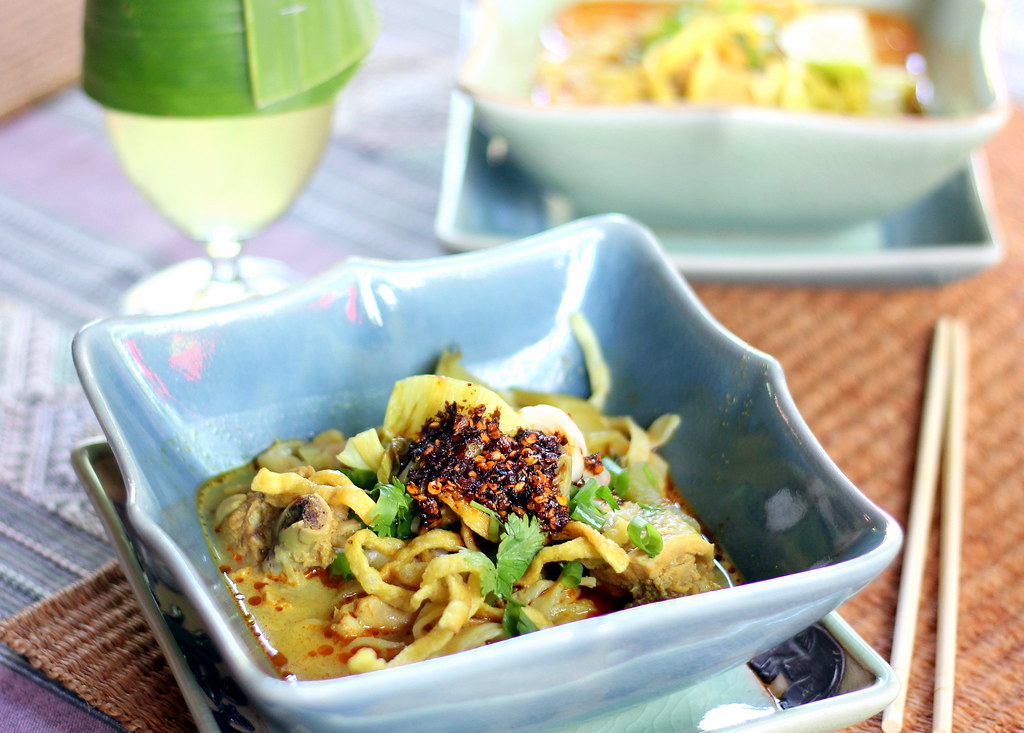
Speaking of lunch, Chiang Mai Celadon prepared a local noodle called “Khao Soi” for us. This delicious bowl of “Khao Soi” featured flat yellow egg noodles soaked in a rich and savoury curry broth and is served with spring onions, pickled cabbages and slices of lime. A small handful of egg noodles have been deep-fried and added on top and also crushed into the broth for a toothsome texture. You can choose from chicken, pork or beef “Khao Soi”.
Chiang Mai Celadon
Address: 135/4 Moo 6 Doisaket – Bosang Road, Papong, Doisaket, Chiang Mai 50220 Thailand
Phone: 66 53 484693 / 66 53 484695
Website: http://www.chiangmaiceladon.com/
Email Address: info@chiangmaiceladon.com
Opening Hours: 8am to 5pm daily.
2:30pm – Wat Phra That Doi Suthep
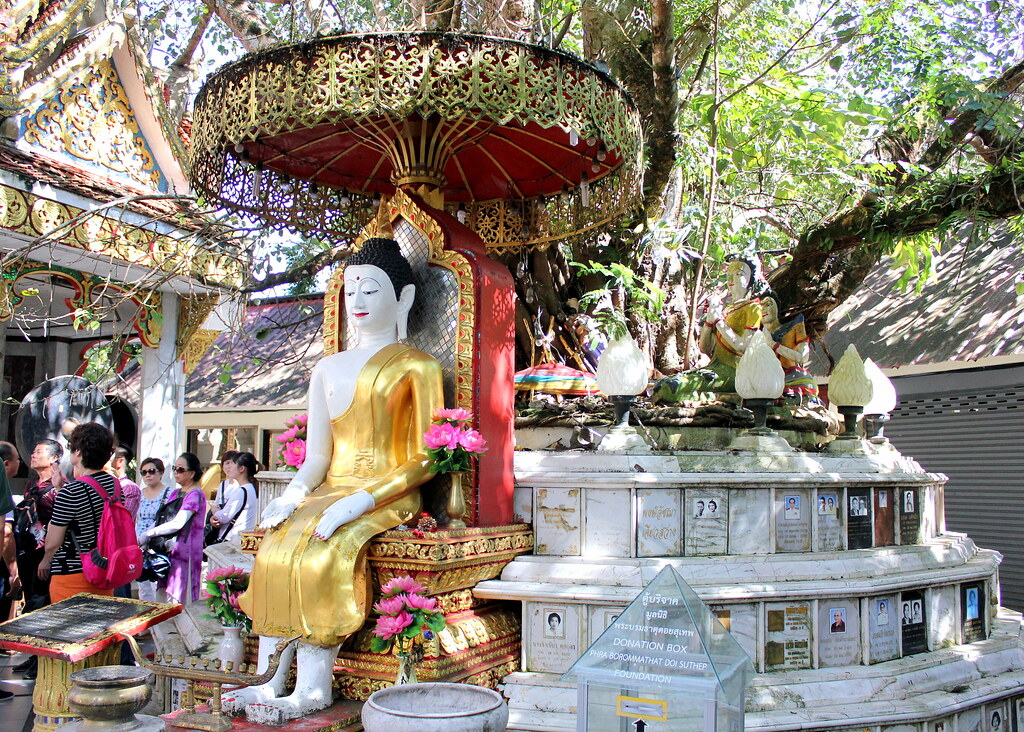
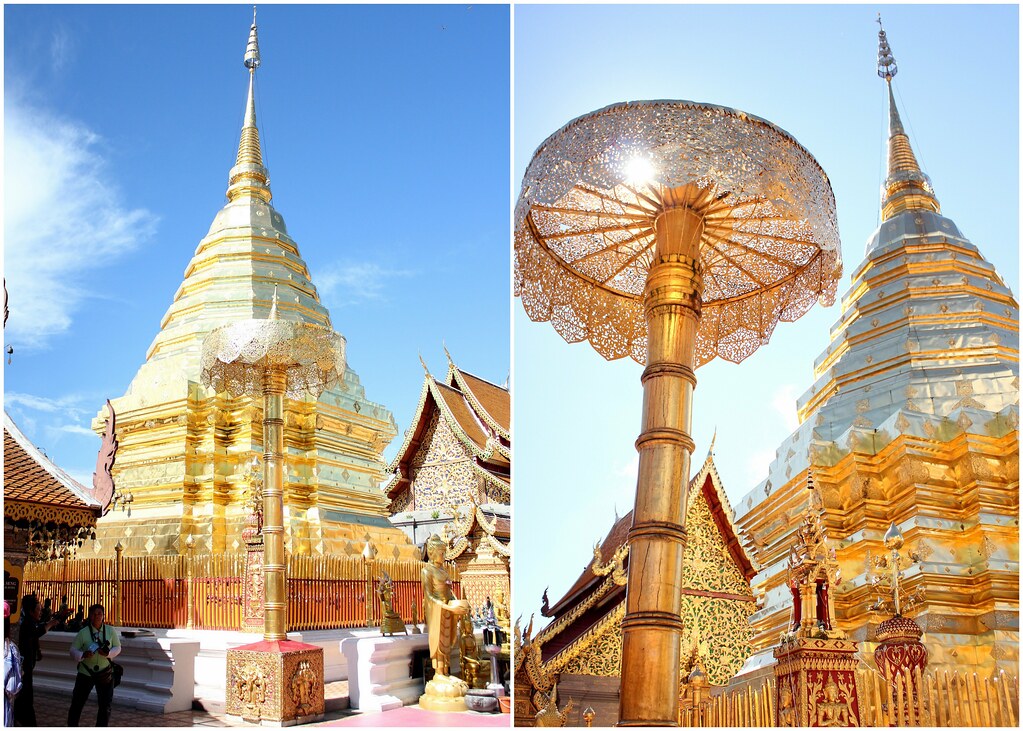
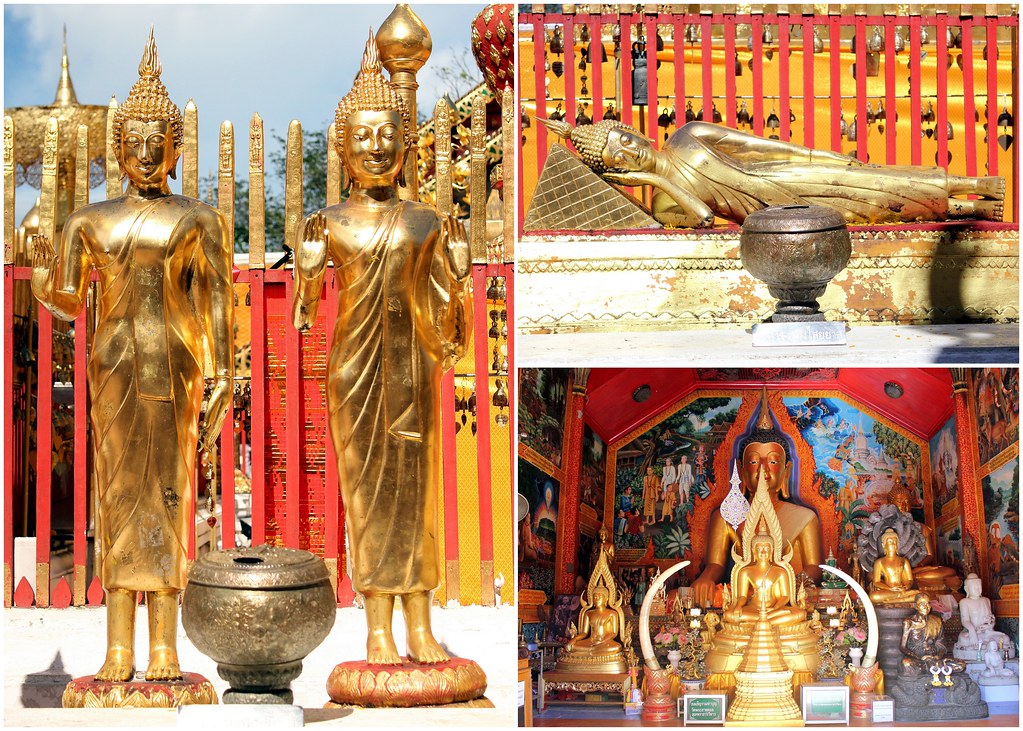
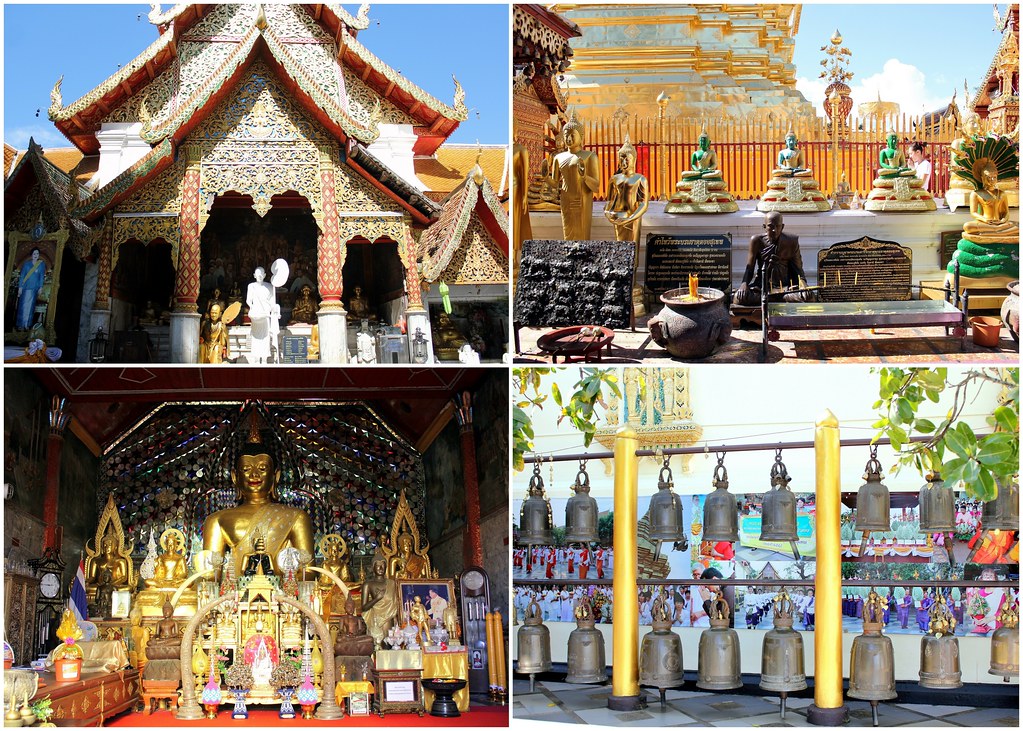
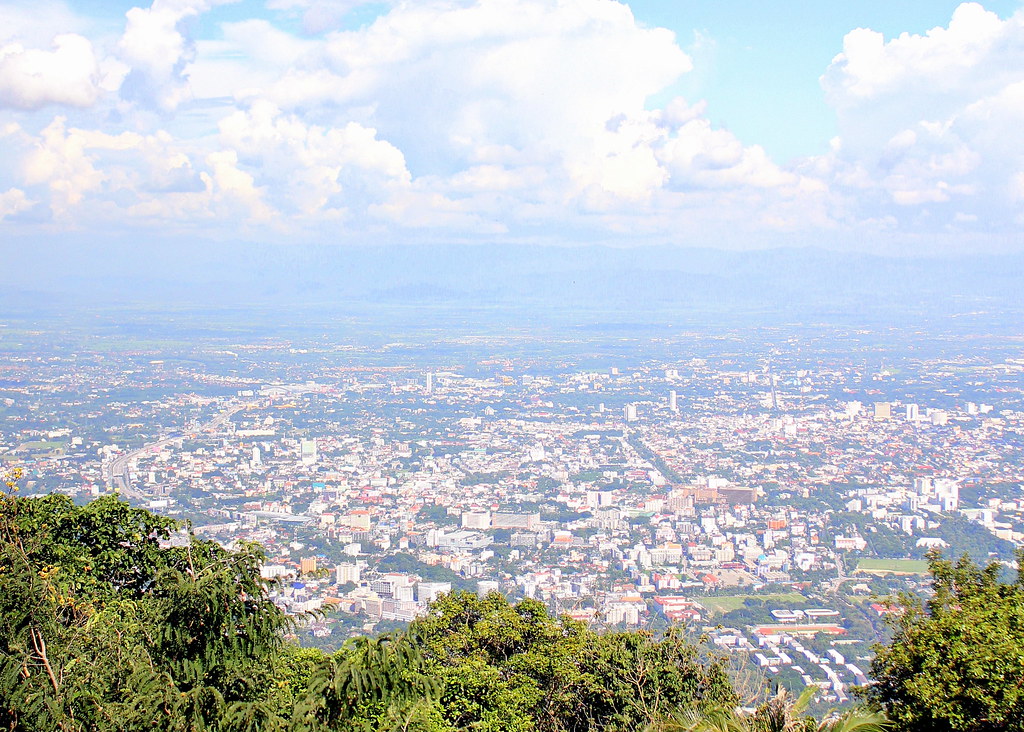
This majestic holy temple sits on the top of Doi Suthep Hill but it’s best to nap while the cab driver takes you up the 15km winding mountain road or you might get motion sickness. Wat Phra That Doi Suthep was built in 1383 as a Buddhist monastery and is still funded by donations as a working monastery today. The architecture, statues, murals and shrines seen at Wat Phra That Doi Suthep will take your breath away. Upon arriving at Doi Suthep Hill, you can begin your journey up 300 steps of the intricately carved mythical Naga Serpent Staircase and marvel at the splendor of your surroundings. However, if the weather is too hot, just take the lift up for 30Baht ($1.20SGD) per pax.
Your eyes will be blinded by the shimmering golden ‘stupa’ that is the centerpiece in the central enclave area. The exterior is made up of 400,000 pieces of gold leaves(solid gold) and the four carousels surrounding this ‘stupa’ represent royalty. Outside the central enclave area, you will find the shrine to the White Elephant, with the story of how the temple was founded. There are many ‘gongs’ surrounding the temple and Doi Suthep has one of the world’s largest ‘gongs’ and you’re allowed to give it a try! Don’t forget to follow the walkway further down which leads you to a large viewing terrace. At 3,520 feet above sea level, you get to take in a panoramic view of Chiang Mai and its surrounding countryside.
Wat Phra That Doi Suthep
Address: Tambon Suthep, Amphoe Mueang, Chiang Mai
Opening Hours: 6am to 5pm daily.
6:00pm – Indulge in Street Hawker Food near Chiang Mai’s North Gate
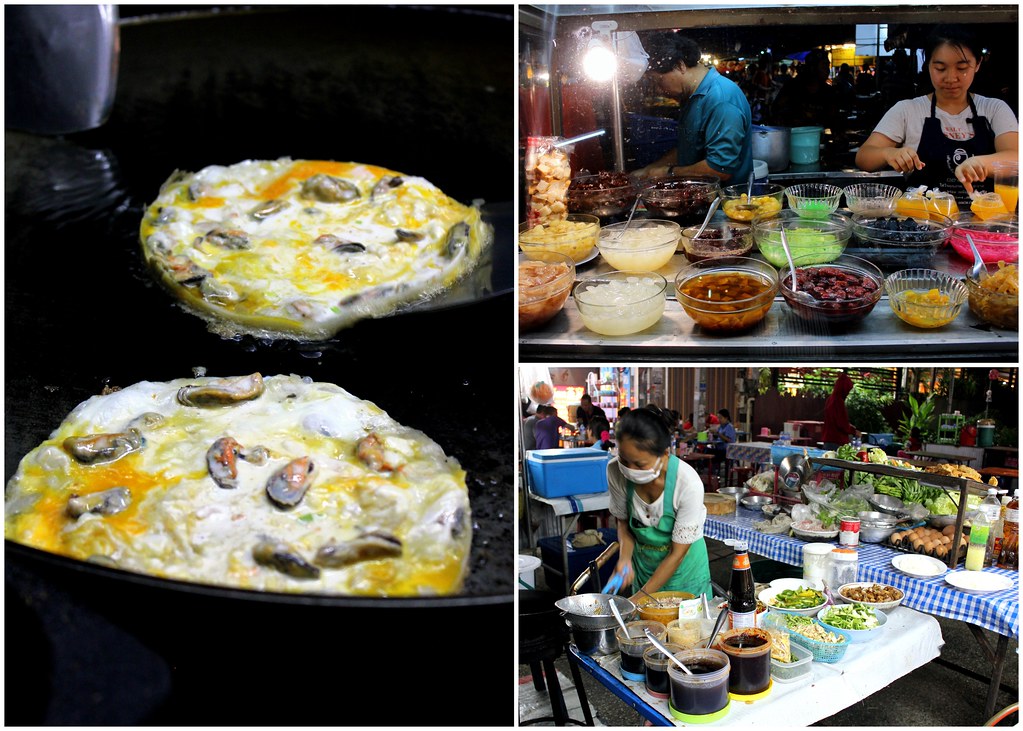
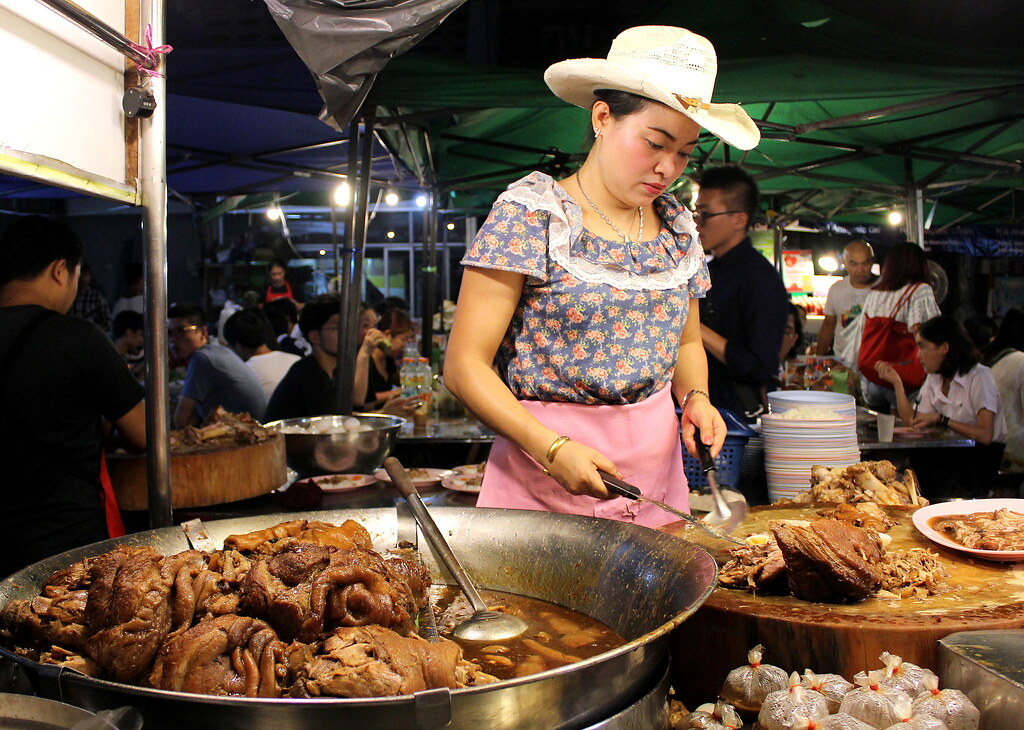
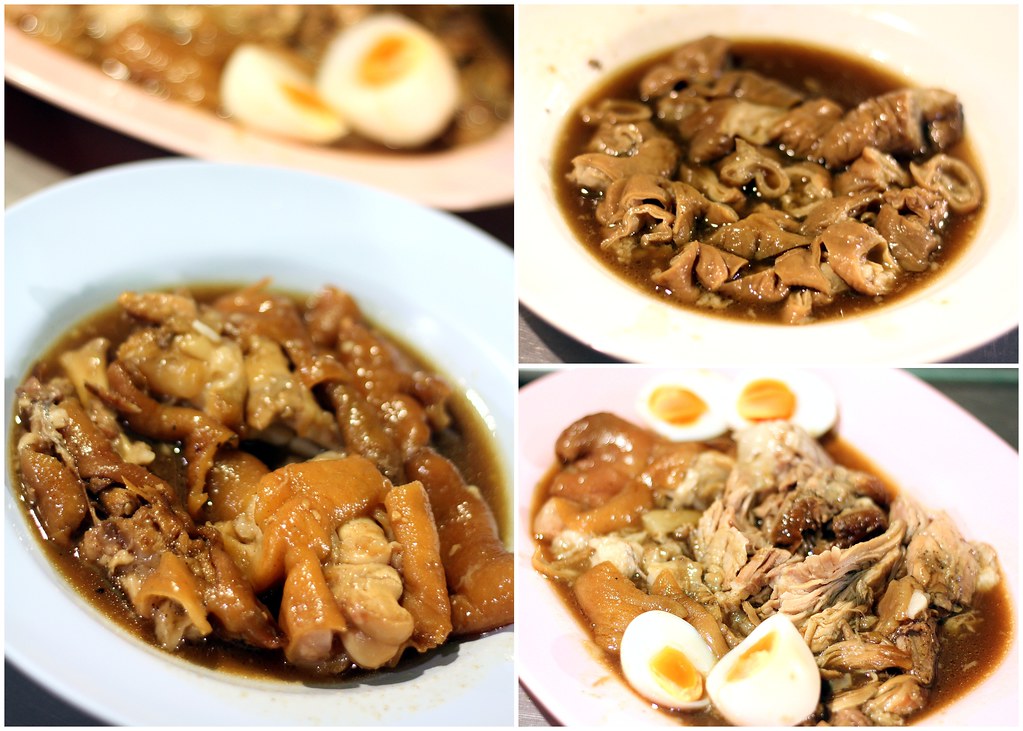
There are many hawker/street stalls set up just across the street of Chang Phueak, Chiang Mai’s North Gate. It’s hard to miss a cowgirl’s delicious fork-tender “Khao Ka Moo” (pork trotters rice) located here. The stall is named “凤飞飞猪脚饭”. If you’re familiar with the singer, Fong Fei Fei, you’ll notice that this hawker’s cowboy hat sort of resembles the singer’s style. Cowgirl lady continuously chops the pork trotters that has a good mix of fats and lean meat and some other pig parts as the queue is never-ending. It’s super tasty, with a hint of cinnamon and star anise flavours. Remember to add the salted vegetables that are placed in huge containers at each table! Each plate of pork trotters rice costs only 30Baht ($1.20SGD).
凤飞飞猪脚饭
Address: Thanon Manee Nop Parat, Amphoe Mueang, Chiang Mai, Thailand
Opening Hours: 5pm to 2am daily.
9pm – Chiang Mai Night Bazaar (Night Market)
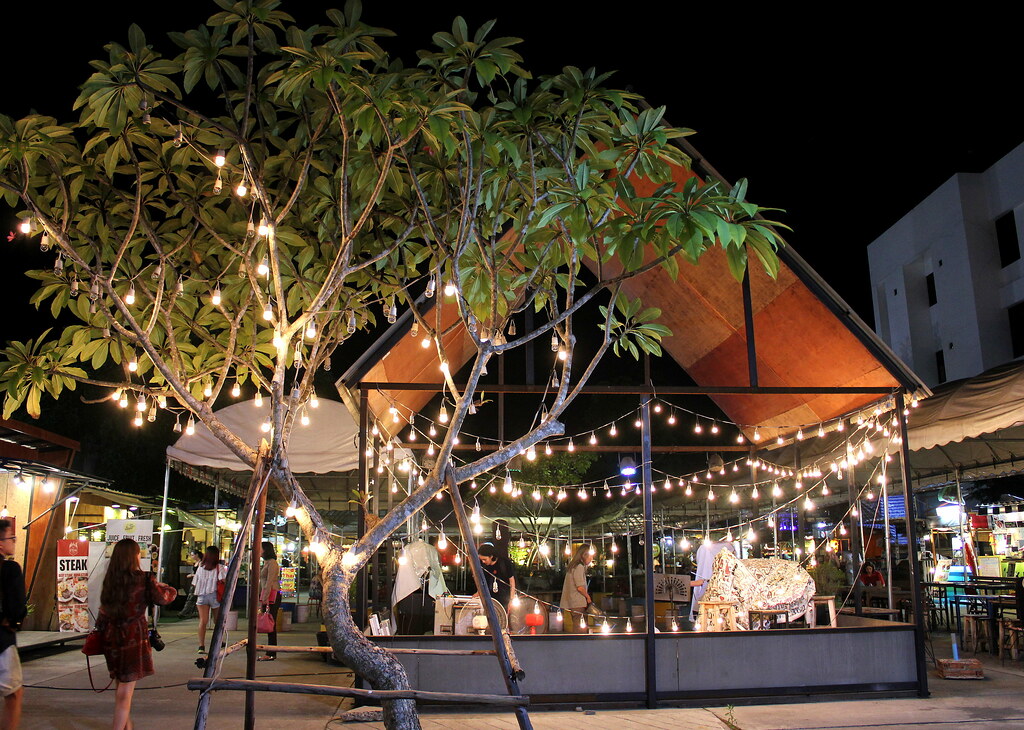
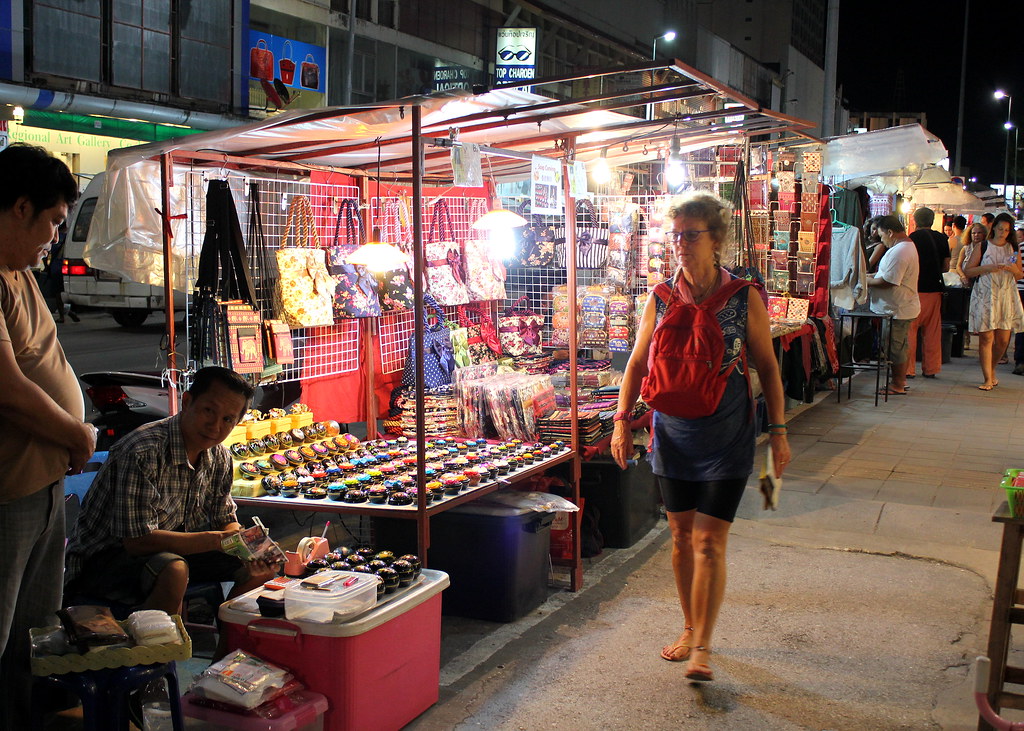
We were really lucky that our hotel – Dusit D2 Chiang Mai – was located just a stone’s throw away from the daily Night Bazaar. The street vendors along both sides of the roads sell a huge variety of fake designer goods, clothes, shoes, accessories, belts, pirated DVDs and CDs and locally handcrafted Thai goods at extremely affordable prices. Remember to bargain as the Thai vendors expect you to do so – it’s part of the fun of shopping at night markets! Bargaining is almost a “national sport” in Thailand! You should always start slashing around 50% and work your way up till you get 30-40% off the asking price. Even if you’ve no intention of buying anything, just go for a stroll at the Night Bazaar for an awesome experience. The place is a beautiful mess of brightly coloured lights, music, sounds of tourists bargaining, with the fragrance of food from vendors lingering in the air.
Chiang Mai Night Bazaar
Address: Along Chang Klan Road
Opening Hours: 7pm to 12midnight daily.
There you go – a snippet of our day in Chiang Mai! Besides visiting historical and cultural places, Chiang Mai has elephant camps, orchid gardens and other natural wonders for you to discover. We would’ve loved to stay longer in Chiang Mai if we had the chance to. Well, this is a good excuse for our return in future.
We would like to thank Thai Airways, (Amazing Thailand) Tourism Authority of Thailand and the World Tourism Organization for organizing the ASEAN Bloggers Media Trip to Bangkok.
WHERE TO STAY IN CHIANG MAI
Tips: Nimman or Old City
Hotels: Compare Chiang Mai hotel prices through HotelsCombined



